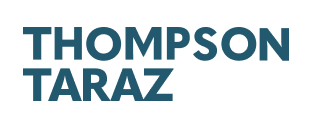For regulated financial firms, compliance monitoring isn’t optional – it’s an obligation. This is the process whereby the compliance team prove to all stakeholders that compliance controls are effective, or that they are remediating to make them so.
Despite this critical importance, a recent survey of fintech firms revealed that fewer than 10% have adopted automated compliance monitoring systems. Most still manage their Compliance Monitoring Programmes (CMPs) through spreadsheets and emails, with the inefficiencies and hidden risks this manual approach invites. We discovered that many compliance officers don’t appreciate the ease of adopting an automated system and the wide ranging benefits to be gained.
Life with Manual Compliance Monitoring – Familiar but Flawed
If your firm currently manages its CMP using Excel and emails, the following process might sound familiar:
- Compliance tasks and monitoring checks are recorded and tracked on spreadsheets.
- Manual emails are sent out as reminders for staff to perform monitoring tasks.
- Staff members complete monitoring activities and reply via email with their results.
- Compliance teams then manually update spreadsheets.
- Corrective actions are managed through additional emails, requiring constant tracking.
- Management Information (MI) reports are manually compiled, often with delays.
Every step is manual and requires human intervention. Its not just time-consuming; it significantly increases the likelihood of errors, creates unnecessary stress, and risks regulatory scrutiny due to incomplete audit trails.
What Does ‘Automated’ Compliance Monitoring Mean?
Automation doesn’t mean the system magically performs monitoring tasks itself—it is most likely that real people still need to perform these checks. Instead, an automated compliance monitoring system manages the process and workflow:
- CMP tasks are stored centrally within the system.
- Automated reminders prompt staff about monitoring deadlines and responsibilities.
- Individuals performing monitoring directly update the system with results and corrective actions.
- The system automatically tracks the completion of remedial actions.
- Instant, real-time management information dashboards and reports are available at the click of a button.
This transforms compliance management from manual chaos to structured efficiency, enabling your team to manage by exception rather than juggling countless emails and massive spreadsheets.
Immediate Benefits of Automation
Automation brings significant immediate benefits:
- Massive reductions in administrative effort, equating to tangible cost savings.
- Enhanced accuracy through reduced human error.
- Comprehensive and easily accessible audit trails.
- Real-time management information, empowering proactive compliance management.
Easy to Adopt, Simple to Implement
A key misconception about automated systems is that they are always complex or cumbersome to implement. The truth is, adopting a cloud-based solution like My Compliance Centre is remarkably straightforward. It does not require any internal IT support, your existing Compliance Monitoring Programme can typically be loaded into the system in under an hour, with team members trained even faster. Most medium-sized firms are onboarded and getting value from the systrem in just 1-2 weeks.
Stakeholder Wins Across Your Organisation
Automation benefits all stakeholders in your organisation:
- Compliance Officers: Reduced admin burden, freeing time for strategic oversight and proactive risk management.
- Operational Staff: Simple, user-friendly interfaces that simplify task completion and status updates with personal dashboards empower them and putting them in control of their tasks.
- Senior Management and Boards: High-quality, instant management information for confident decision-making and effective governance
- Regulators and Auditors: Clear, detailed audit trails and evidence, simplifying audits and regulatory reviews.
Real-Life Example
Consider a medium-sized investment firm previously reliant on spreadsheets and emails for compliance monitoring. Transitioning to an automated compliance monitoring system, they immediately
- Cut administrative workload by over 50%.
- Improved accuracy by eliminating manual errors.
- Enhanced audit readiness and regulatory confidence especially with the Board and senior management.
- Made management reporting of compliance risks available in real time and very simple to compile.
Conclusion: Time to Upgrade Your Compliance Monitoring
Automation isn’t about replacing your compliance monitoring; it’s about empowering your compliance management. With straightforward adoption, immediate benefits, and significant long-term advantages, it’s clear why automated compliance monitoring systems are becoming essential. If you’re still relying on spreadsheets and emails, now’s the perfect time to switch to an automated solution and transform your compliance approach.
EXPLORE OUR COMPLIANCE MONITORING MODULE
The author of this article is Ben Mason.
Ben is the founder of My Compliance Centre, a regtech solution which offers a comprehensive range of modules to support modern risk and compliance functions. Prior to setting up My Compliance Centre, Ben established one of the leading FCA/PRA regulatory compliance consultancies and for almost 20 years has been offering advice to financial services firms to help them manage their compliance obligations.











